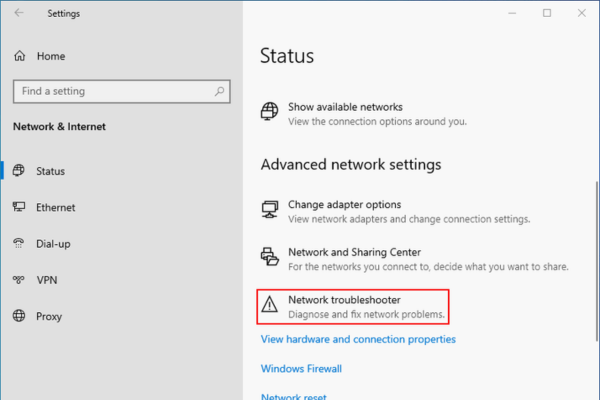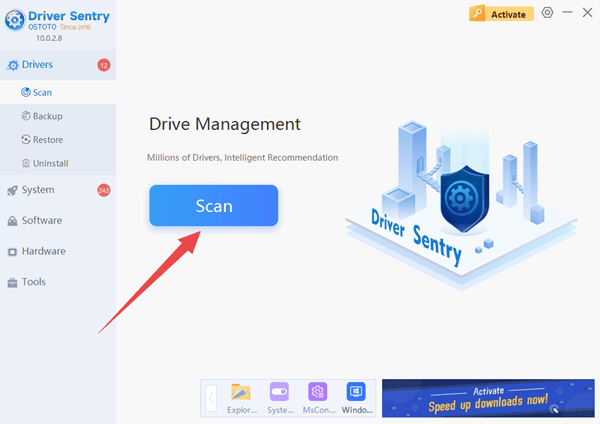Have you ever been in a situation where you desperately need to use the internet on your laptop, but it just won't detect any WiFi networks? It's incredibly frustrating, right? You can't check your emails, stream your favorite shows, or even browse the web. If you're facing the "laptop not detecting WiFi" issue, don't worry. In this guide, we'll walk you through some simple steps to fix it.

How To Fix Laptop Not Detecting WiFi?
1. Check Your WiFi Network
The first thing you should do for your laptop not detecting WiFi is to check if your WiFi is actually turned on. Sounds obvious, but it's often overlooked. Some laptops have a dedicated WiFi switch. If yours does, make sure it's in the "on" position.
If your laptop doesn't have a physical switch, you can check the WiFi settings in Windows. Click on the "No internet connection" icon on the right side of the taskbar. Look for the WiFi option and ensure it's enabled.
Another common culprit is Airplane Mode. If it's turned on, your laptop won't be able to detect any WiFi networks. To turn off Airplane Mode in Windows 10 or 11:
-Open the "Settings" app. You can usually find it by clicking the Start button and looking for the gear-shaped icon.
-Select "Network & Internet".
-On the left-hand side, click on "Airplane mode".
-On the right-hand side, flip the switch to turn Airplane Mode off.
2. Check the Required Services
Sometimes, the problem lies with the services running on your computer. Some users have reported that when the Windows wireless service isn't running, their laptop can't detect the WiFi network. Here's how you can check and start the necessary services:
-Press the Windows key and the R key at the same time. This will open the "Run" dialog box.
-Type "services.msc" and press Enter. This will open the "Services" window.
-Look for services like "Remote Procedure Call (RPC)", "Windows EventLog", and "Windows Update". Check their status. If a service isn't running, right-click on it and select "Start".
-You can also configure the startup type of some services. For example:
-Set "Windows Event Log" to "Automatic".
-Set "Windows Update" to "Manual".
-Set "Wlan AutoConfig" to "Automatic".
-Set "Network List Service" to "Manual".
-Set "Network Location Awareness" to "Automatic".
-Set "Radio Management Service" to "Manual".

3. Run the Network Troubleshooter
Windows has a built-in network troubleshooter that can often fix the "laptop not detecting WiFi" problem. Here's how to use it:
-Open the "Settings" app.
-Select "Network & Internet".
-Scroll down and find the "Advanced network settings" section.
-Click on "Network troubleshooter".
-Follow the on-screen instructions. The troubleshooter will scan your network settings and try to fix any issues it finds.
4. Update Your WiFi Driver
An outdated WiFi driver can cause all sorts of problems, including your laptop not detecting the WiFi network. To update your WiFi driver:
-Open the "Device Manager". You are able to achieve this by performing a right-click on the Start button and then choosing "Device Manager".
-Expand the "Network adapters" section.
-Right-click on your WiFi adapter and select "Update driver".
-Follow the on-screen instructions to complete the update.

If you're not comfortable updating the driver manually, you can use PcGoGo Driver Sentry. PcGoGo Driver Sentry is a great tool that can automatically scan your system for outdated drivers, including your WiFi driver. It then downloads and installs the latest and compatible drivers for you. Here's how to use it:
-Download and install it first.
-Open the software and click the "Scan" button. PcGoGo Driver Sentry will quickly scan your computer to identify any driver issues.
-After the scan, look for the WiFi driver in the list of detected problems. Click the "Update" button next to it.
-Driver Sentry will then download and install the updated driver. Restart your laptop, and see if it can now detect the WiFi network.
5. Modify WiFi Adapter Property
Disabling the "allow the computer to turn off this device to save power" option can sometimes fix the "laptop not finding WiFi" problem. Here's how:
-Open the "Device Manager" again.
-Expand the "Network adapters" section.
-Right-click on your WiFi adapter and select "Properties".
-Go to the "Power Management" tab.
-Deselect the checkbox labeled "Allow the computer to turn off this device to save power".
-Click "OK" and then reboot your laptop.

6. Other Potential Fixes
If your "laptop not finding WiFi" issue persists after trying the above methods, you can try these additional fixes:
-Check the Wi-Fi channel: Sometimes, the WiFi channel your router is using can cause interference. You can try changing the channel on your router. The process for doing this varies depending on your router model, but usually, you can access your router's settings by typing its IP address into a web browser.
-Turn on network discovery: This allows your laptop to find other devices and networks on your local area network. You can usually turn it on in the "Network & Internet" settings.
-Activate DHCP: DHCP (Dynamic Host Configuration Protocol) assigns IP addresses to devices on your network automatically. Make sure it's enabled on your router.
-Change the DHCP users's number: Some routers have a limit on the number of devices that can connect via DHCP. You can try increasing this number.
-Restart your modem and wireless router: Unplug both devices from the power source, wait for about 30 seconds, and then plug them back in. This can often fix network-related glitches.
-Change SSID & password on your WiFi router: Sometimes, changing the name (SSID) and password of your WiFi network can solve connection issues.
-Log out and log back in: Log out of your Windows account temporarily and then log back in. This can refresh your network settings.
-Try a different frequency band: If your router supports both 2.4 GHz and 5 GHz bands, try connecting to the other band.
Conclusion
A laptop not detecting WiFi can be a real pain, but with these steps, you should be able to get your laptop connected to the WiFi network again. And remember, PcGoGo Driver Sentry can be a great help in keeping your drivers up-to-date and preventing future WiFi connection issues. If you've tried all these methods and still can't fix the "laptop not detecting WiFi" issue, it might be time to seek further technical assistance.